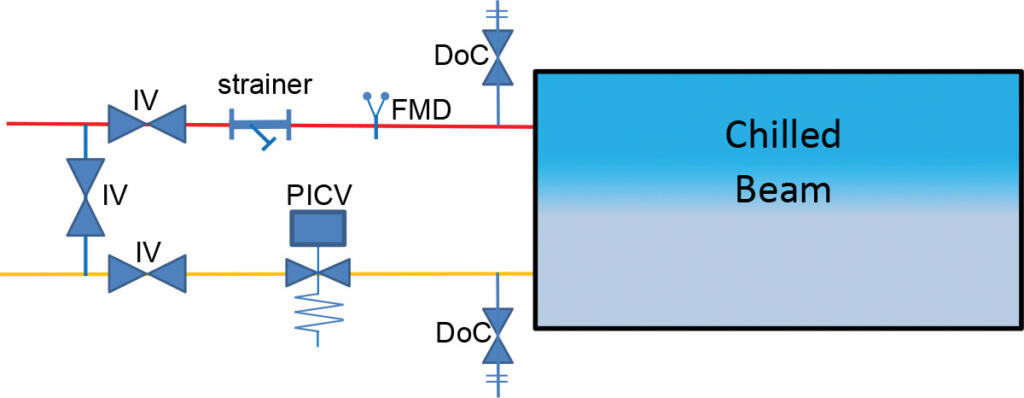The passive system operates primarily on convection, when in cooling mode the hot air will rise to the ceiling, becoming more dense as cooled and therefore falling back to ground level.
The active system utilises the air flow from the ventilation system to achieve a greater heating/cooling capacity. The heat transfer takes place over a coil with heating or chilled water passing through.
A control valve will modulate depending on the signal received from the BMS (e.g. through the room thermostat) and will control the temperature to the coil accordingly.
Recommended Solutions
Crane Fluid Systems has a number of applicable solutions available for this type of terminal. See examples below.
PICV has become the preferred solution for many designers and installers in recent years. However, the option of using the traditional DPCV method is still available and can suit certain applications.
Option 1
Pressure Independent Control Valve (PICV)
PICV Stand Alone
- Easy to set up
- Straightforward commissioning
- No need for separate Commissioning Set and 2 Port Control Valve
Dominator w/ PICV
- Can be remotely fitted away from the terminal
- Reduced space constraints
- Extended levers available for chilled systems
Dominator PRO w/ PICV
- Direct mounting onto a terminal
- Reduced installation time
- No need for insulation due to mounting over drip tray
CommPac w/ PICV
- Multi-manifold system allowing commissioning of up to 6 FCUs from one location

Chilled Beam with PICV
Option 2
Differential Pressure Control Valve (DPCV)
DPCV Stand Alone
- Range of controllable dPs Available
- Available with Companion Valve
Dominator w/ Comm. Set
- Available with either static Commissioning Set or Motobalance
- Available with Strainer
- Extended levers available for chilled systems
Dominator PRO w/ Comm. Set
- Direct mounting onto a terminal
- Reduced installation time
- No need for insulation due to mounting over drip tray
CommPac w/ DPCV
- Multi-manifold system allowing commissioning of up to six FCUs from one location
- Commissioning Sets on each terminal connection

Chilled Beam with Typical Valve Arrangement
